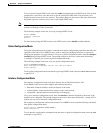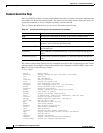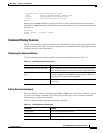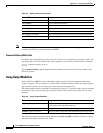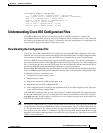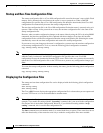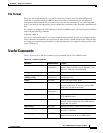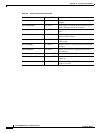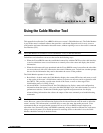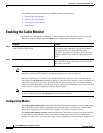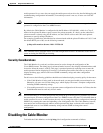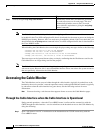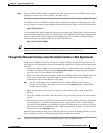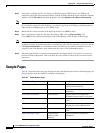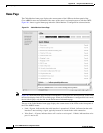
B-1
Cisco uBR924 Software Configuration Guide
OL-0337-05 (8/2002)
APPENDIX
B
Using the Cable Monitor Tool
This appendix describes the Cisco uBR924 cable access router’s Cable Monitor tool. The Cable Monitor
is part of the router’s onboard software that provides a web-based diagnostic tool for easy access to
configuration and status information about the router, without requiring access to the router’s command
line interface (CLI).
Note The Cable Monitor is available in Cisco IOS Release 12.1(1)T and later releases.
Technicians and subscribers can access the tool in the following ways:
• When the Cisco uBR924 router has established connectivity with the CMTS over the cable interface,
a service technician can use a web browser to remotely access the router and display the desired
information.
• When the cable network is not operational and the Cisco uBR924 router is not online, the subscriber
can access the tool with a PC connected to the router’s Ethernet ports. Technicians can then prompt
the user for the information they need to determine the source of the problem.
The Cable Monitor operates in two modes:
• Basic Mode—In basic mode, the Cable Monitor displays the current LED colors and status, as well
as the results of the router’s initialization routines (its power-on self-tests and its registration with
the CMTS). This provides a quick status check of the router, as well as what stage of the
initialization process is failing (if any).
• Advanced Mode—In advanced mode, the Cable Monitor also displays status and configuration
information about the router’s voice ports, the DOCSIS MAC layer, and cable interface, as well as
performance statistics. Technicians with the proper login ID and password can also display
advanced debug information that collects the output of the most commonly used troubleshooting
commands.
Note The Cable Monitor is a read-only tool—it cannot be used to modify or reconfigure the Cisco uBR924
router. However, some of the information displayed in the advanced mode could be used to defeat the
router’s security. This information is available only to users who enter the enable password. Cisco
recommends that an encrypted enable password be set on all Cisco uBR924 routers deployed at
subscriber sites. Passwords (along with SNMP community strings) should be different for each router,
using a non-trivial pattern. If an enable password is not being used at a subscriber’s site, the Cable
Monitor should be run only in the basic mode.



